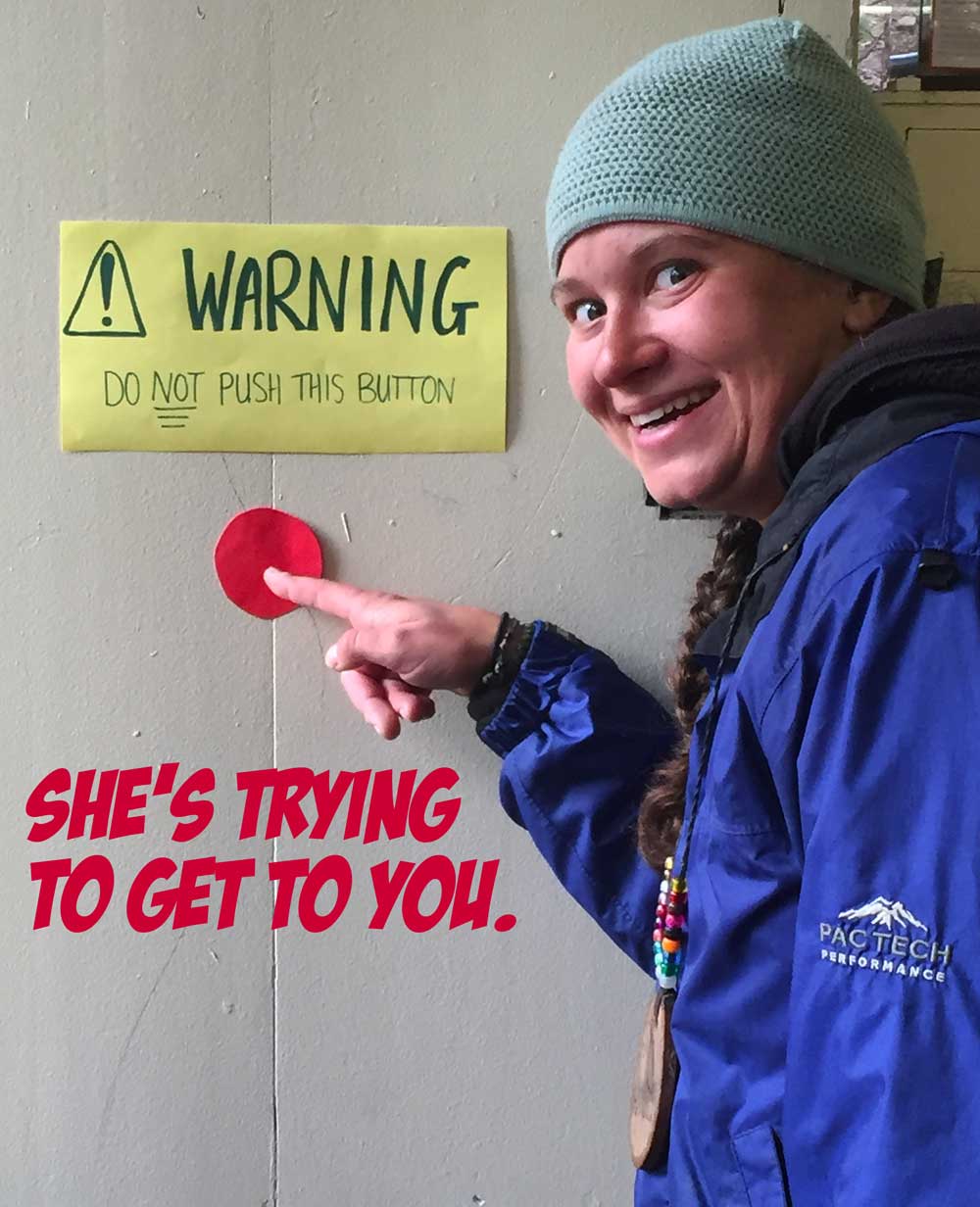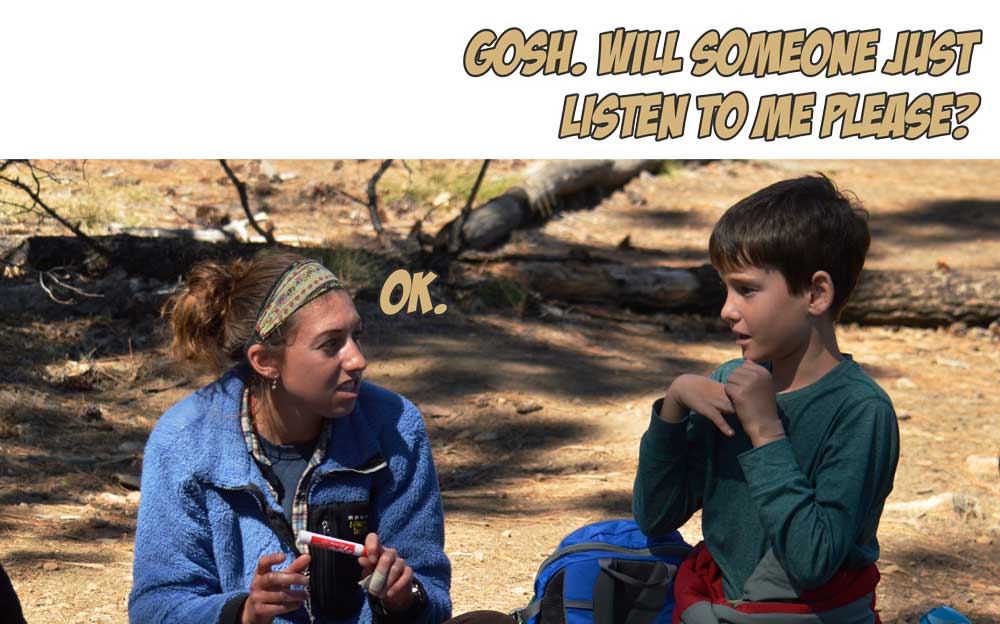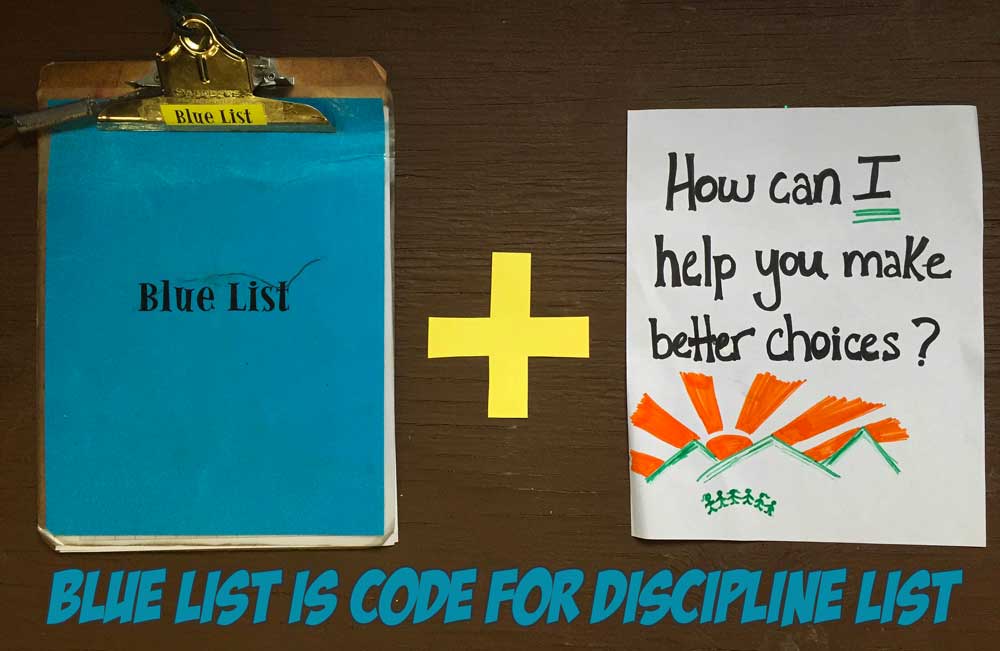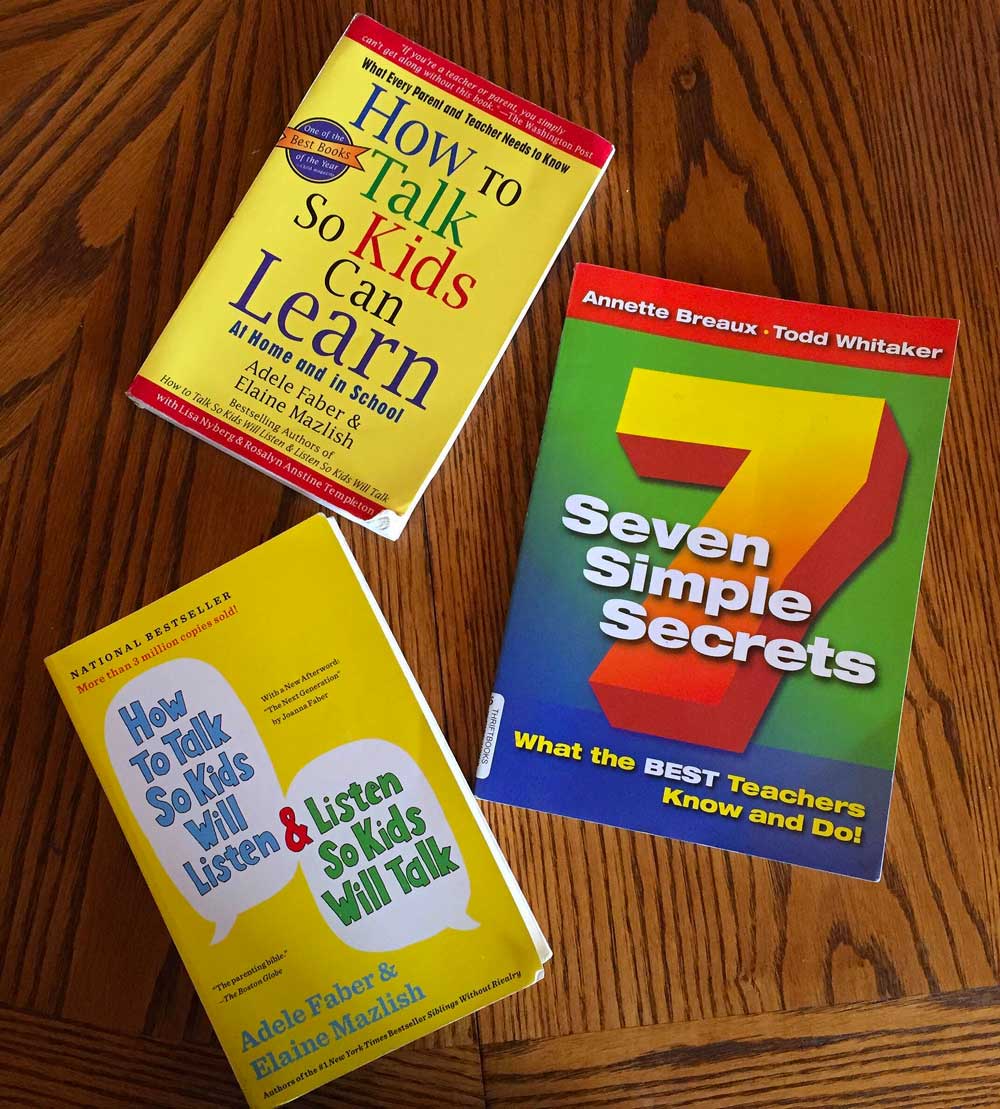Do you know the student who throws a stick when their instructor isn’t looking? The one who goes past the boundary their teacher very explicitly creates or breaks the rule that was thoroughly reviewed three times before the activity? Maybe you were that student! These students who tend to consistently “push buttons,” and are often stereotyped as doing so, quickly become my favorites.
Why do I like these challenging types of students, these “button pushers”? Because I have learned some effective strategies that make working with them both fun and rewarding.
 Step 1: Recognition
Step 1: Recognition
As Field Instructors here at High Trails, we meet our students straight off the bus. Usually within the first ten minutes we are able to identify a student who likes to test limits. For instance, a few weeks ago as I walked my group to the bathroom after taking attendance for the first time, a student kicked a pinecone at me – no joke – and soon after threw a stick as I happened to turn around.
Another week a student stubbornly hiked far behind the group as the others eagerly chatted with me in the front. Instantly I knew that I needed to show these two students I cared about who they were and that I was excited to get to know them and be their instructor. Now, of course it is my goal to do that with my entire group; however, if I fail to immediately show these two students in particular that I care about them and believe in them, I could lose my opportunity to do so – they could quickly adhere to their comfortable, prescribed roles of “troublemaker” and continue to push boundaries for the rest of the week.
 Step 2: Project BFF (Best Friends Forever) AKA Active Listening
Step 2: Project BFF (Best Friends Forever) AKA Active Listening
After the student kicked a pinecone at me and then threw a stick, I asked him why that was an unsafe choice. I then informed him of our three-strike system and that normally I would give him a strike for such behavior. However, because he had not yet received the Respect Speech where they learn our expectations for respecting the physical and emotional safety of others and themselves, I was giving him a verbal warning. If he made another unsafe choice, it would be an automatic first strike. I then quickly switched subjects and asked him if he had ever been to Big Bear or similar mountains before and what he was most excited about. He sat next to me at lunch and rarely left my side for the rest of the week. He also never again pushed boundaries.
I had shown a sincere interest in him and I listened when he spoke. Really listened.
Do you remember the last time someone intently listened to what you said, made eye contact, thoughtfully responded, and even asked you a question that showed they really cared? It makes you feel good, like what you think and feel and say matter.
 Step 3: Smiles and Positive Reinforcement
Step 3: Smiles and Positive Reinforcement
The other student I mentioned who stubbornly hiked in the back of the group reportedly struggled to abide by rules at school. As soon as he picked up a water buffalo without being asked, I said, “Thank you so much, [name], for helping me and the group by carrying a water buffalo!” He voluntarily carried one for the rest of the week. I asked him what he liked to do outside of school, and when he tripped and laughed at himself, we created a joke about how to hike safely so as not to ‘super-man’ at ground level again and that we do not mean for our students to literally hug the Earth. He helped me pick up my belongings before we left a spot to hike and he similarly hiked by my side. Whenever he raised his hand, I called on him, and like all of my students, I responded to his answer enthusiastically with a smile and thanked him for his quiet raised hand.
Taking the time to get to know these students and showing them you see them in another role – as positive contributors to the group who are kind and helpful to you and their peers – enables them to see themselves positively and continue to act that way in the future. Even if they have a praiseworthy action or choice once in a blue moon, recognize them for it! “Thank you so much, [name] for helping Monique pick up the orange peels she dropped!” We all need to feel like we bring someone joy, that we are appreciated, and that we matter.
 Step 4: Accountability and Acknowledging Feelings
Step 4: Accountability and Acknowledging Feelings
Misbehavior and poor choices most often occur when students are bored, unengaged, or without a task. Towards the very end of the day, I could see one of these students beginning to grow tired and unengaged. His tone had grown sarcastic and his participation had declined. I should have taken these cues and dramatically switched my teaching style or even more quickly segued to the next activity; without a doubt I should have made him my personal assistant. Instead, during a moment of down time while I organized my materials, he made a poor choice.
After I engaged the other students in a task, I pulled him aside. I questioned why he made his choice. When he lacked an answer, I acknowledged that he seemed bored. I took responsibility as his instructor for not engaging him in that moment; I also held him responsible for his choice and utilized our strike system. I told him I would do my best in the future to engage him every moment. I also asked him to communicate with me if he did feel bored again so that we could prevent any more poor choices, which have a dramatically negative impact on him and the people around him.
We as instructors must of course hold our students to high and equal standards. We also need to recognize our role in their actions, respectfulness, and level of engagement. Simply asking students what we as their instructors can do to help them be more respectful, attentive, or engaged can open the channels of communication and positively change the way we teach and thus the way our students behave.
 Conclusion:
Conclusion:
We all seek validation, appreciation, and love. Recognize the students who will need it more than others and listen to them – look at them when they speak; ask more questions; show a genuine interest in who they are. They will love you for making them feel like they matter, and in return they will want to please you and surpass every expectation you hold. Reinforce this positive behavior with sincere joy and gratitude – cast them in a new light for their peers and themselves [and maybe even you!] to see. When poor choices are made, acknowledge their feelings, and remember that we all play a role in poor decision-making. Hold both yourself and them accountable and ask how you can help them make better choices in the future, so that you can be a better teacher, too.
 List of awesome resource books: How to Talk So Kids Will Listen and Listen So Kids Will Talk, Seven Simple Secrets to Effective Teaching, and How to Teach So Kids Will Learn
List of awesome resource books: How to Talk So Kids Will Listen and Listen So Kids Will Talk, Seven Simple Secrets to Effective Teaching, and How to Teach So Kids Will Learn
At High Trails Outdoor Science School, we literally force our instructors to write about elementary outdoor education, teaching outside, learning outside, our dirty classroom (the forest…gosh), environmental science, outdoor science, and all other tree hugging student and kid loving things that keep us engaged, passionate, driven, loving our job, digging our life, and spreading the word to anyone whose attention we can hold for long enough to actually make it through reading this entire sentence. Whew…. www.dirtyclassroom.com

Comments are closed.